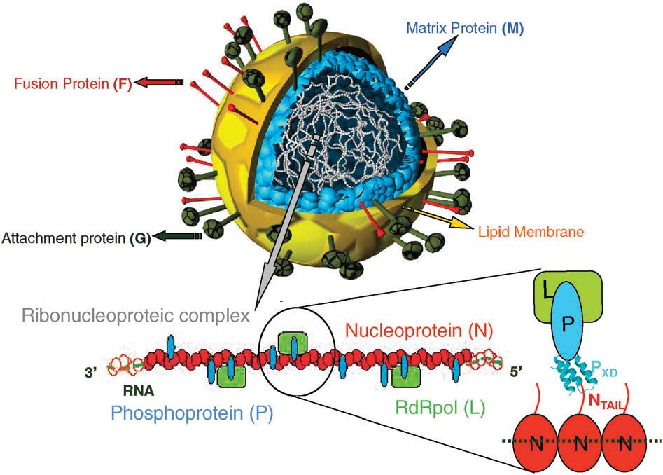Virus proteins
Viral proteins, encoded by the viral genome, are either structural (capsid, matrix, envelope) or nonstructural (e.g. enzymes, oncoproteins, inhibitors of cell macromolecular synthesis, transcription factors, etc.). They may be essential for replication of new virions, or nonessential, contributing to virus infection within cells.Virus particles (known as virions) consist of two or three parts: the genetic material made from either RNA or DNA long molecules which hold genetic information a protein coat which protects these genes and in some cases an envelope of lipids which surrounds the protein coat when they are outside a cell.
Virus proteins are studied directly using techniques such as sodium dodecyl sulfate (SDS)–polyacrylamide gel electrophoresis, Western blotting, immunoprecipitation, and pulse–chase experiments, and by the use of proteases or inhibitors of post-translational modifications.
Overview
The coding capacity of viral genomes varies from below 5 to over 100 genes. This in turn is reflected in the different complexities of virus particles and their respective replication cycles. Viral proteins are either structural (part of the virion architecture) or nonstructural and of these some are found in the virion (usually enzymes) while others are present only within infected cells. Nonstructural proteins can have a range of functions, often mimicking those of cellular enzymes, and many are multifunctional.

Virus genes and proteins are often referred to as being essential or nonessential. The former are an absolute requirement for a virus to complete its replication cycle and to produce infectious virions. Genes or proteins that can be deleted from the virus without seriously affecting replication in cell culture are viewed as nonessential. However, replication in cell culture may not reflect the in vivo situation and it may be more appropriate to consider such genes and proteins as having auxiliary functions rather than having a redundant role.Indeed many auxiliary proteins have been characterized with important functions that contribute to virus replication, mask or inhibit immune responses, or promote transmission to new hosts. For example, several members of the insect-specific Baculoviridae synthesize a chitinase enzyme within infected cells that plays no role in the replication of new virus. However, its activity degrades the chitin exoskeleton of an infected caterpillar, liquefying the animal to promote increased transmission to new hosts by spreading the virus across the soil and foliage.